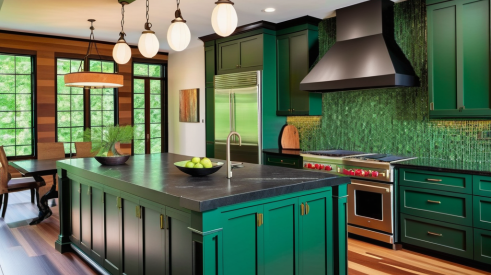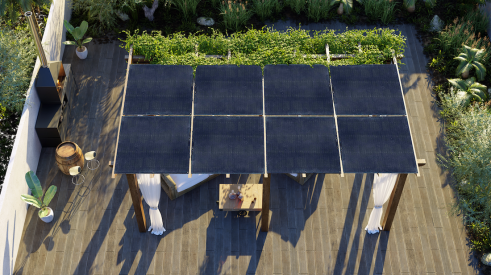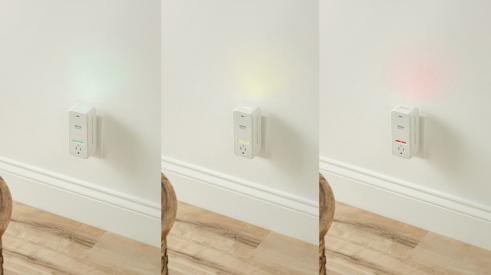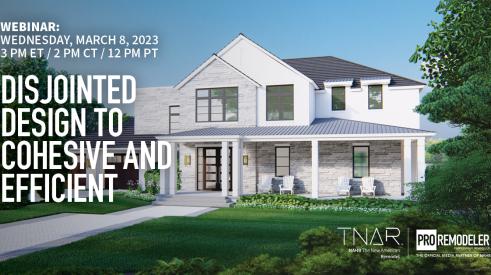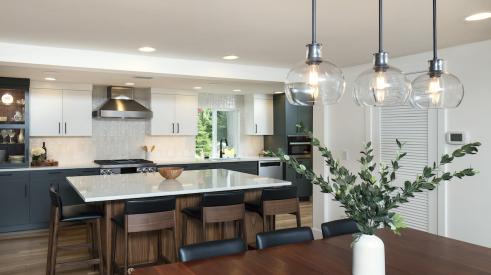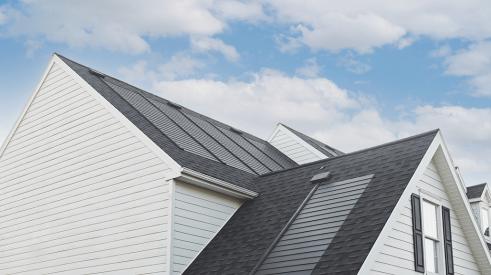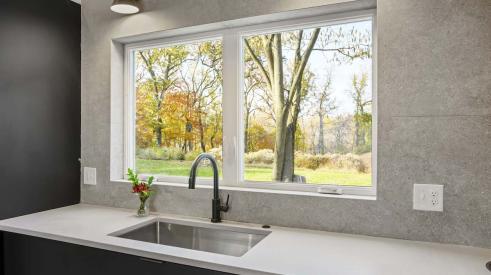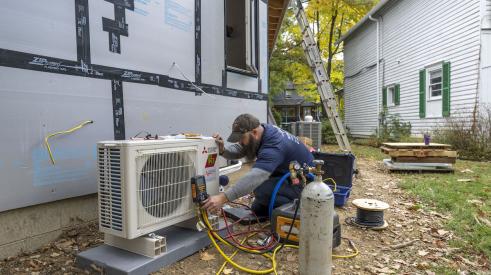The sustainable building movement has many different shades of green. From the off-grid yurt with composting toilets to the production home constructed with natural and recycled materials and utilizing high-efficiency mechanicals and appliances, there are attractive and cost-effective green options out there to fit any situation and budget.
A range of factors such as government stimulus and federal tax incentives, new business models, innovative refinement of existing technologies and high performance materials are bringing energy efficient and green homes to the masses.
With the wide availability of free or low-cost energy audits, homeowners have been able to pinpoint highly effective energy upgrades and fully appreciate their promised savings. That combination – better, more affordable technologies and products along with proven performance and customer satisfaction, bodes well for the immediate and extended future of the green building market.
“I see a lot of interest in green building in general across all demographics and regions,” says Brian Levine, vice president of business development and marketing for Windtronics, makers of the Honeywell wind turbine. “People young and old and men and women all over the country are reaching for what has become the low-hanging fruit of improving their home’s energy efficiency. And that’s just a starting point for many.”
One product just becoming widely available pretty much at this moment was born in 2007, when Dow received funding from the U.S. Department of Energy to develop “building integrated” solar arrays for residential and commercial markets. The result is the Powerhouse Solar Shingle, which performs like a standard asphalt shingle while also harnessing solar energy to offset a portion of a home’s energy usage.
Unlike traditional silicon-based solar collectors and PV cells, the Powerhouse shingle uses the more cost-effective and durable thin-film solar technology. Electrical circuitry is integrated into each shingle, which are then connected by wireless plug-style connectors.
“There’s no on-roof wiring, minimal through-roof penetrations and no need for an electrician to present during installation,” says Jane Palmieri, managing director of Dow Solar Solutions. “A qualified builder or roofing contractor can do the install, and the electrical connections can be made later. “
Palmieri says that federal incentives along with local utility discounts could reduce the cost by 50 percent or more, and consumers love the aesthetic of the product, which blends seamlessly with asphalt shingles.
“This is the kind of technology that helps remove any remaining obstacles to widespread adoption of solar roofing,” says Palmieri.
Another product just coming to mass market is the Honeywell Wind Turbine from Windtronics. Unlike a typical wind turbine, the blades move the gears, which turn a generator, thus creating electricity. The Honeywell model has magnets at the tips of the blades, which are enclosed in a wheel that contains coiled copper. So, in effect, the entire turbine is an electric generator.
The result is a smaller, quieter, more efficient source of wind power than has ever been available to homeowners. Levine says that using current prices and numbers, payback for a $4,500 turbine (prior to installation) would be about 14 years, including the 30 percent federal tax credit.
“We’re trying to solve all the problems associated with traditional wind power generation for the home,” says Levine. “We feel that our wind turbine addresses all those issues of size, weight, noise, safety and efficiency.”
The turbine measures six feet in diameter, weighs only 200 pounds, can be mounted on a rooftop or pole, and its replaceable blades can generate power in 2 mph winds (where traditional wind generators need at least 7 or 8 mph winds to overcome resistance). Levine says they are even looking into installing them horizontally over the chiller exhausts of commercial buildings for highly effective energy recapture.
Another sign of the widespread acceptance of the green building philosophy and its energy efficient mantra is when companies make sweeping product improvements and make them available across the entire array of products. Rheem, the established manufacturer of heating and cooling systems, not only offers the SolPak line of active solar water heating systems, they have tailored its options to include their entire line of tankless and high efficiency storage tanks for an easily customizable solution for any home.
The SolPak systems can provide up to 80 percent of a home’s hot water, and Rheem’s line of tankless gas products and Marathon storage tanks are tailored to efficiently account for the remaining demand. Tankless units heat water only when it is needed, and include an easy-to-use digital thermostat for user convenience. The Marathon electric tank water heaters are made to blend seamlessly with the solar system, and even include a unique pump controller, which allows the homeowner to see how many kilowatts the solar panels have collected.
Rinnai has also expanded its product offerings in the tankless hot water heating category. The new condensing water heating technology recaptures residual heat from flue gases and transfers it to the water being heated. This process delivers up to 95 percent thermal efficiency, which translates to significant energy savings when compared to traditional gas tank water heaters. They also feature a concentric venting design which uses a polypropylene inner pipe which locks into place with gasket seals instead of glues or solvents, virtually eliminating gaps and increasing safety and ease of installation.
In addition to providing energy and heat, homeowners have been taking advantage of the newest and best ways to keep as much of that energy – in the form of heating and cooling – in their living space and prevent it from leaking out of their homes. And if you can do that while going natural, reducing waste and improving air quality, then consumers have proven more than willing to pay a little premium.
Owens Corning is appealing to those sensibilities with their new EcoTouch platform of insulation products. Made with natural fibers and a formaldehyde-free formulation, every pound of insulation annually saves 12 times more energy than was used to produce it, according to the company. EcoTouch is manufactured with a minimum 50 percent total recycled content, and produces less dust during installation. Dow says it has excellent stiffness and recovery characteristics, and can be easily installed to insulate odd-shaped cavities and small spaces.
The spray foam insulation category has been getting a lot of notice lately, mainly for the products’ abilities to fill and seal around penetrations and small spaces.
Johns Manville recently introduced their own line of open-cell spray foam insulation to complement its other insulation products. The low-density foam insulation is recommended for walls, floors, unvented and vented attics and ceilings and will create a seamless protective air barrier helping achieve maximum building envelope performance. Johns Manville introduced at the same time their IB coating, an intumescent barrier coating recommended for use over open-cell spray foam insulation in unvented attic and crawlspace applications.
In order to be truly sustainable, today’s tight, energy efficient homes have to last for decades with very few maintenance problems. And few things can create a bigger maintenance problem than water intrusion and moisture damage. Joe Lstiburek, a principal with Building Science Corporation in Somerville, Mass. and noted building science guru, wrote in a recent article for ASHRAE Journal that certain insulations, sheathing materials and claddings — while excellent and efficient materials on their own — could create a nightmare of moisture problems when used together in certain combinations.
Basically, the article stated that certain absorptive claddings, when used with sheathing prone to damage from prolonged moisture exposure, and air-sealing insulations (such as spray foam insulation or foil-faced foam sheathing) could be a recipe for disaster. Lstiburek’s answer was an air gap between claddings and sheathings to drain away moisture, aid in ventilation and drying of the sheathing, cladding or both, and allow for diffusion of moisture vapor.
One of Lstiburek’s product recommendations was drainable building wraps, and one of the newest such products available in this country is Delta-Dry from Cosella-Dörken. The dual-chambered ventilated rainscreen is a semi-rigid, heavy-duty polyethylene membrane with a unique structure of studs and channels. The top and bottom of the system is left open,
allowing for ventilation and drainage. The product is wrapped around exterior walls with edges overlapped so that its studs interlock. As a solid barrier as opposed to a breathable housewrap, the company states Delta-Dry provides better separation of indoor and outdoor environments.
Hydrofilament drainable housewrap from Benjamin Obdyke also addresses those same problems, and it is installed in the more familiar fashion of traditional housewraps. The product has been shown in tests to drain moisture 80 percent faster than the next best-performing enhanced housewrap and delivers 140 times more drainage than a standard housewrap.
As for the immediate future for the sustainability movement as it pertains residential construction, Windtronics’ Brian Levine isn’t alone in his optimism. “More than our product alone, I’ve seen a lot of focused interest in sustainability,” says Levine. “People are looking at wholesale changes in their entire homes, because it doesn’t make sense to use a 20-year-old thermostat and incandescent lights in your home and then try to incorporate renewable energy.”
Sustainable building is now an established construction philosophy, and new products are making its goals more attainable for the masses
Add new comment
Related Stories
Working Toward Affordable, Resilient Homes
A new natural disaster protection act from NAHB aims to support hazard mitigation projects
Client Design Choices in the Time of Social Media and AI
Social media speeds up the trend cycles, and now artificially created images are falling into homeowners' hands
Indoor Air Quality Gets Smart
A home's air quality can now be cloud connected and fully automated with this innovative product
Webinar: From Disjointed Design to Cohesive and Efficient—The New American Remodel 2023
Access the recording for the first The New American Remodel webinar held on March 8 at 2 pm CT
5 Standout Energy-Efficient Products Spotted at IBS 2023
See what this green remodeler recommends from the show floor
Innovative Products: GAF Energy Timberline Solar Shingles
GAF Energy’s latest innovation has taken the solar world by storm
Detailed Design: Benefits of Biophilism
See the details our Model ReModel contractors chose to infuse nature into their ADU
Heat Pumps Now Required in Washington New Construction
Washington is the second state to require heat pumps in an effort to electrify homes





